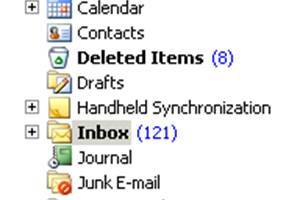 Behold the humble e-mail. With origins known mostly to Internet anthropologists, it became one of the first killer apps of the Internet era.
Behold the humble e-mail. With origins known mostly to Internet anthropologists, it became one of the first killer apps of the Internet era.
Marketers coveted its unprecedented direct access to individual consumers. They lusted after its potential for personalization. They rhapsodized over its near-zero costs. They exulted, “Behold, we have seen the promised land!”
Then they ruined it. Who would have suspected that an ROI of one in a million would be profitable? And who knew that “V!^8ra” could be spelled so many different ways, yet still be recognized by the human brain?
Thus, e-mail became reviled. Consultants make a living coaching us on how to avoid being its slave. It’s less cool than your father’s Oldsmobile.
But try to take it away from anyone, especially in business. If you don’t use e-mail, you may as well be invisible. (I’ve read about people trying to survive only with other communication tools; good luck to them.)
So let’s review what made e-mail so seductive:
- It is fast.
- It is simple.
- It collapses time.
- It shrinks distances.
- It is flexible.
- It is cheap.
E-mail is not perfect, but it can get a lot done. The numbers tell the story; there are few digital channels that match e-mail’s reach and breadth today.
I ponder the e-mail this week because our organization just installed and launched a new e-mail marketing and newsletter platform, integrated with our association management system. Though the launch has been smooth, we are muddling through the complexities of filters, bounce rates, and the like.
E-mail has an important place in our communications strategy, but it is not the magic bullet. By itself, it cannot replace print, advertising, or anything else. I’m not sure of its optimal place in the proverbial marketing funnel, but I think I know what it cannot do, and I am convinced that most e-mail marketing blunders occur when it is used in the wrong place, at the wrong time.
Our new project has also been a fascinating exercise in cultivating a new culture in our association. Six functional areas were using our old e-mail “platform” (and I use the term loosely) for e-marketing and large-scale e-communication. All six areas were provided access to this new platform.
It’s a powerful tool, and with this power comes great responsibility. We all acknowledged the fragility of the e-mail channel, and how easily any one of us could to ruin it for everyone else. We even agreed to a “death penalty,” which strips any content producer of publishing rights for continually violating our social contract. This kind of silo-busting is rare. It is especially exhilarating because this was created by middle managers, for middle managers, with the after-the-fact blessing of senior management.
Perhaps e-mail’s demise is visible on the horizon. Yes, we should prepare for and experiment with the next big things, whatever those may be. That’s the fun part of being in communications today. But because I have to produce results today, using today’s tools, I’ll keep using e-mail.
Hopefully, the right way.


